100 Items To Store For Survival: Don’t Panic, Prepare
When you think of preparing for emergencies, what comes to mind? Chances are, you think of stocking up on supplies like water, food, and medical supplies. But is that enough to store for survival?
What if a major disaster or emergency strikes and those supplies run out? Or what if you can’t get to them in time? To be truly prepared for any situation, you need to have a wide variety of items stockpiled. So what should you store? Here are 100 items that every prepper should have on hand. Don’t panic – just prepare!
There may be a fine line between what you consider emergency supplies and emergency equipment. It is a given that you will need things like storage containers or tanks for your water storage, gear like butane stoves or SunOvens to cook your food, and the related fuel and pots and pans, depending on the options chosen.
Today, the focus may be considered to be on the “lighter side” as we discuss supplies and how they’ll be used when needed in an emergency. Let’s get started!
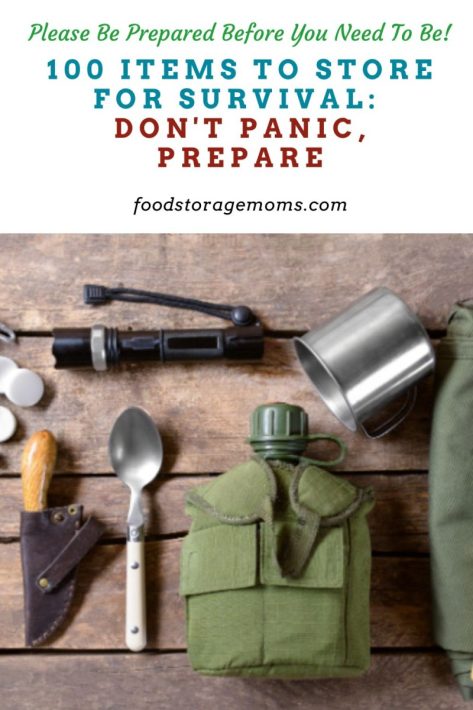
What Does It Mean to Store For Survival?
When we talk about “storing for survival,” what exactly do we mean? In a nutshell, it means having a stockpile of critical supplies on hand that will help you get through that emergency. This could be anything from non-perishable food, potable water, crucial medications, and first-aid supplies. It might even include things like flashlights, batteries, and cash.
The idea is to have as many things as possible that you’ll need to sustain yourself and your family in the event of disasters, floods, or an extended power outage. Of course, different people will have different ideas about what constitutes an “essential” item. But the bottom line is that storing for survival is all about being prepared for the worst.
Simply having emergency food supplies isn’t enough, you also need to know how to use them. That’s why it’s important to learn basic survival skills like cooking when the power is out, building a shelter, starting a fire, and purifying water. With these skills in your toolkit, you’ll be able to weather any storm – literally or figuratively. So whether you’re preparing for an emergency or just want to be ready for anything, remember to store for survival.
100 Items to Store For Survival
I’m not a doomsday prepper, but I am an expert preparedness chick. In other words, I’m prepared for the unexpected. It’s a way of life for me, and I’m sure for many of you. I tip my hat to you for learning the skills as you go along with life’s journey.
Don’t panic if you’re just starting to prep for emergencies. You don’t need to go out and buy everything on this list all at once. Start small, and add to your supplies over time. The important thing is to try to be prepared for whatever comes our way.
Water
First and foremost, it’s important to have enough water. You should store at least 1 gallon of water per person in your household for at least a week.
- Water- My suggestion is four gallons of water per person per day. We’ll need to not only hydrate, but also have water to cook with, maintain a level of personal hygiene, and at least keep our underwear clean enough to wear.
Food Items
In addition to water, you also want to have enough food in your pantry to feed your family for an extended period of time. You want to get food that has a long shelf life so that you can rotate it. However, you want to stock what you will eat! Here’s my list of long-term foods you should store for survival:
- Rice – Any rice works, but I like to store brown rice. Learn How to Cook Rice, here.
- Pasta – You can stretch any meal with a little extra macaroni. Your family’s favorite grain could be a great substitute.
- Beans – Canned or bags of dry beans will work.
- Ramen noodles -These are filling, and you can add your own spices or protein to the nutrients you need to help you stay healthy.
- Canned vegetables – Be sure and buy the ones your family will eat. If nobody likes peas, don’t get peas.
- Canned fruits – You want to be sure to choose your favorite ones so the family will eat them.
- Pancake mix – Yes, you can make them from scratch, but it’s nice to have some that you just add water. Don’t forget the syrup or jam.
- Biscuit Mixes – I understand that these are processed, but if we have an emergency, you can just add water and bake.
- Cold Cereal -This is a great way to have breakfast. Just be sure to choose the ones your family will eat so nothing goes to waste.
- Instant milk – Regular milk goes bad over time, and if you can’t get any for weeks, you’ll want instant milk that you can make with water.
- Peanut butter and jam – This is a great source of protein that can be added to crackers, bread, or other baked goods.
- Crackers – If you can’t make bread, you can eat crackers with peanut butter and jam or tuna with mayo.
- Kool-Aid mixes or Tang – Water can get boring. Have some mixes that can brighten your day.
- Spaghetti Sauce – You can pour this sauce over any pasta to create a simple meal.
- Chili – If you have beans, you can make your own, but canned chili is a great survival food if you can’t cook over a stove.
- Canned meats – I recommend tuna, chicken, and spam. Don’t forget mayo and Miracle Whip.
- Canned Soups – Canned soup is a quick and easy way to make a meal. Make sure to get hearty soups.
- Mac and Cheese – If you have children, don’t forget the mac & cheese. What child doesn’t like this fun food for a meal?
- Flour – Baking supplies like flour, baking powder, and soda are crucial. If you have the basics, you can make bread, biscuits, pancakes, crackers, and tortillas.
- Yeast – You’ll also need yeast to make baked goods. (Saf Instant is my favorite)
- Oil – Most baked recipes need fat like butter or oil. Oil can be stored for quite a while and would be a great ingredient option.
- Sugar or honey – I recommend storing sugar for survival. It can be used in baked goods and a variety of recipes. Honey lasts for years and is more healthy too.
- Spices – Make sure to have Salt and Pepper, Cinnamon, chili powder, and all your other favorite spices.
- Oatmeal – Oats are delicious and nutritious. Plus, it has a long shelf life so it can easily be rotated.
First Aid Supplies
In addition to food and water, you also want to make sure you have enough first-aid supplies to last an extended period of time. Here’s a list of what I recommend:
- Bandages or Band-aids – Whether you are prepping for survival or not, it’s always a good idea to have band-aids.
- Neosporin – This ointment helps heal cuts and scrapes.
- Aspirin – Don’t give aspirin to children, but Aspirin is great to have on hand for pain relief, and also to help minimize the risk of heart attacks and strokes.
- Fever reducers – Make sure you have Tylenol or ibuprofen for children and adults. Also, have at least one thermometer so you can monitor those fevers.
- Cough syrup – You never know when someone will get sick, and who wants to have to live with a cough for an extended period?
- Tums or Pepto-Bismol – helps to relieve those tummy upsets.
- Benadryl – Allergies happen, and if it’s getting you down, you will need an antihistamine right away.
- Cotton balls/Q-Tips – These can be used for a variety of things.
- Vaseline – You can use this for so many things like cuts, scrapes, and diaper issues, but also to lubricate.
- Bag Balm or Shea Butter – This can be used for rashes, itching, and diaper rash.
- Essential Oils- Read 21 Essential Oils Everyone Should Stock Up On for more information.
- Cough Lozenges – I have these next to my bed all the time. Couldn’t do without them in an emergency.
- Vicks VapoRub – Helps to clear a cough and sinus congestion.
- Epsom Salts – Read Linda’s post on the Uses of Epsom Salts for reasons why you should stock it.
- Apple Cider Vinegar- Check out my Apple Cider Vinegar post for more information on why you should store apple cider vinegar.
Survival Items
Although food, water, and first aid items are all important, there are some other essential survival items you should make sure you have:
- Phone chargers – I suggest getting solar-powered phone chargers in case the power is out.
- Flashlights – Get solar-powered flashlights, or make sure to store batteries as well.
- Lanterns – These are good light sources.
- Paracord, twine, or rope – Rope and twine are good for making shelters as well as other things. Keep these things in your sheds.
- Knife(s) – You never know what might need to be cut during an emergency.
- Multi-task tool – One of my sons-in-law has one of these handy items on his belt at all times.
- N-95 masks – Make sure to have various sizes for kids and adults.
- Matches – I recommend waterproof matches so that you can still use them if they get wet, but regular matches will work as well.
- Garbage bags – Getting rid of waste is something to think about.
- Baggies – These come in handy to carry things you might need from your first aid kit, some temporary food storage, etc.
- Duct tape – Read my post, Duct Tape Why You Need to Store It to find out all the many uses of duct tape.
Homestead-Garden Needs
If you are going to prepare for survival, you will want to know how to garden. Eventually, food stocks run out, but if you can grow your own food, you can survive. Here’s the survival gear you need:
- Shovels – Make sure to have large and small shovels.
- Garden gloves- If you are working with weeds and plants, you could run into poison ivy or just get blisters. Make sure to protect your hands.
- Soil amendments – Not all soil is conducive to growing plants. Make sure you have soil amendments like lime, fertilizer, and organic material.
- Garden Seeds – You can’t grow a garden without seeds. Be sure and buy only organic non-GMO varieties.
Paper Products
None of these items are absolutely necessary to stay alive, but they do make life easier and more sanitary, even if you don’t have running water. Here’s what I recommend you store for survival:
- Toilet paper- When the COVID pandemic happened, toilet paper was wiped off the shelves, but those that were prepared had toilet paper.
- Paper towels
- Plastic silverware
- Paper bowls
- Paper cups
- Napkins
Personal Hygiene Necessities
Personal hygiene doesn’t just mean soap and shampoo. You also need female items, ways to clean your clothes, and toothpaste. Here are the personal hygiene items to store for survival:
- Tampons – If you don’t use tampons, you don’t need to store them.
- Menstrual Pads – Although I recommend stocking up on disposable menstrual pads, having reusable ones or a menstrual cup is always a good idea in case you run out.
- Shampoo
- Conditioner
- Razors/Scissors – Although you can let yourself get hairy, being able to shave helps to keep you mentally healthy.
- Shaving cream – You can also use soap or conditioner instead of shaving cream, but if your skin is sensitive, make sure you stock up.
- Toothbrushes – You need to have enough toothbrushes for everyone in your home. Toothbrushes should be replaced every 3 months.
- Brush/Combs
- Disposable diapers – Disposable diapers are great to have in emergencies, whether for babies or adults.
- Baby wipes – Not only are these great for babies, but they are a good way to clean yourself if you don’t have running water.
- Hand sanitizer
- Bags for others – Makeup Bags with Hygiene Items for unexpected guests.
- Bars of soap – These will last longer than body wash.
- Wash bucket – If you don’t have running water, you’ll want a wash bucket to clean your clothes in. Hopefully, you’ll have stored water or a water source nearby.
- Clothesline – It may seem outdated, but if the power goes out, you can’t easily dry your clothes. A clothesline will come in handy.
- Clothespins
- Clothespin Holder
- Laundry Detergent – Be sure and keep your laundry done, and store at least a year’s supply of laundry soap.
- Buckets
- Chapstick – Get chapstick with SPF. If it has an SPF number it will protect your lips from the sun.
- Rags – I like to keep clean rags in a drawer to use for emergencies of any kind.
Cleaning Supplies
Cleanliness can prevent the spread of germs and bacteria that can make you sick. Make sure you have the following cleaning supplies for survival:
- Clorox bleach – If your sewer backs up, you will need bleach to kill the bacteria. Bleach is also a great way to sanitize water, so make sure you store bleach.
- 409 Spray
- Febreze Spray – Although it doesn’t necessarily clean, it can make a musty room smell much better.
Miscellaneous
You don’t need the following items to survive, but they can really make life easier in the event of an emergency. Here are some miscellaneous items I recommend you store for survival:
- Linda’s Book Prepare Your Family For Survival
- Emergency medical handbook to use when the emergency room is not available Medical Handbook.
- Chocolate, dark or light works for me.
- Books that are in hard form, if we lose power we may not be able to use e-books.
- Playing Cards
- Children’s books – If we’re cooped up in a school, or even our house, having some colored pencils and coloring books or tablets would keep the young ones distracted from most disasters.
- Bible or book you study as part of your religion.
- Axe
- Chainsaw – That neighbor down the street with a chainsaw may be your new best friend.
- Emergency Colored Tape – I talked about this in another post, red means needing immediate help, yellow means delay/not immediate, green means they are ok to wait for assistance, and black means death.
- Tents or tarps
- Extra Socks/Shoes
- Coats, hats, and gloves in case of inclement weather.
- Blankets/Sleeping Bags
- Coffee filters- They can be used for so many things.
How to Store Long-Term Food Storage
When it comes to emergency food storage, the best approach is to think like a Boy Scout: Be prepared. That means having a plan in place for what you will do in case of a power outage, hurricane, severe weather, earthquake, fire, or another disaster. It also means being mindful of expiration dates and keeping your supplies fresh. Here are some tips for how to store your emergency food:
- Keep canned goods in a cool, dry storage space. A basement, garage, pantry, or cupboard is ideal.
- Store dry goods such as rice, pasta, and cereal in airtight food-grade containers or food-grade buckets.
- Rotate your supplies regularly so that nothing expires.
- Use Mylar bags to store freeze-dried foods.
- Keep a list of pending expiration dates handy so you know when to use something before it goes bad.
Final Word
This list is not all-inclusive, but it should give you a good start on things you will need to include in your emergency preparedness planning. If you have any suggestions or ideas, please feel free to share them in the comment section below. And as always, stay safe and prepared.
Please continue preparing for emergencies. May God Bless this world, Linda
Copyright Images: Traveler Set AdobeStock_108052124 by Africa Studio

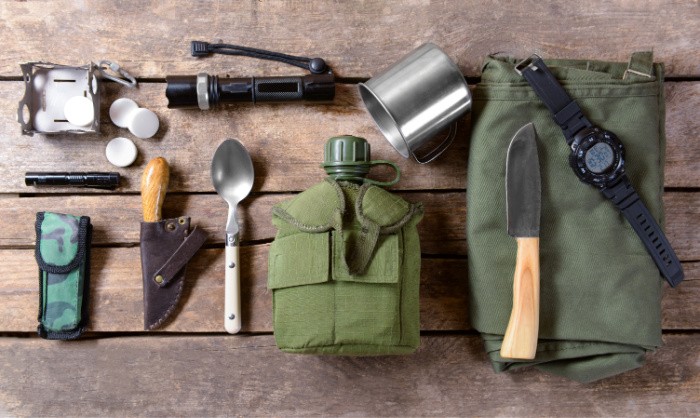

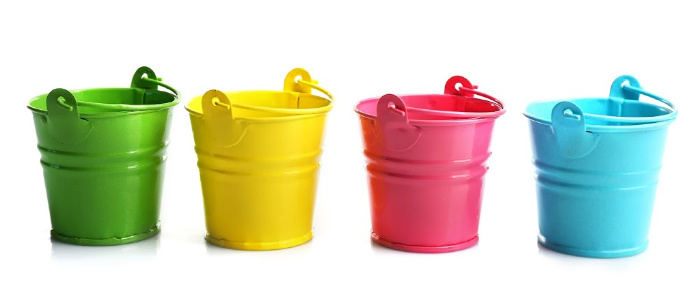
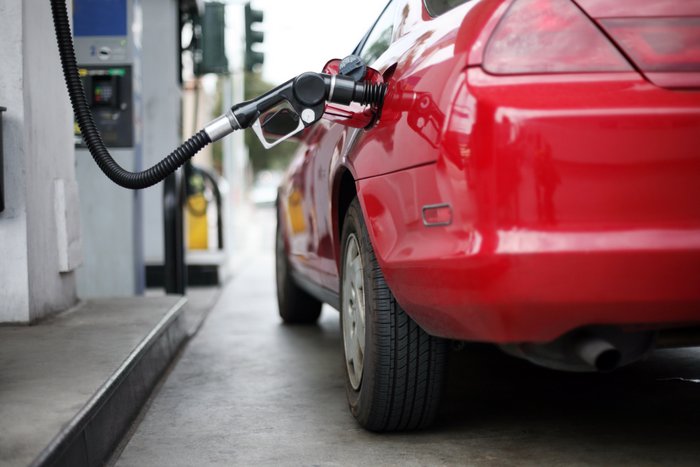
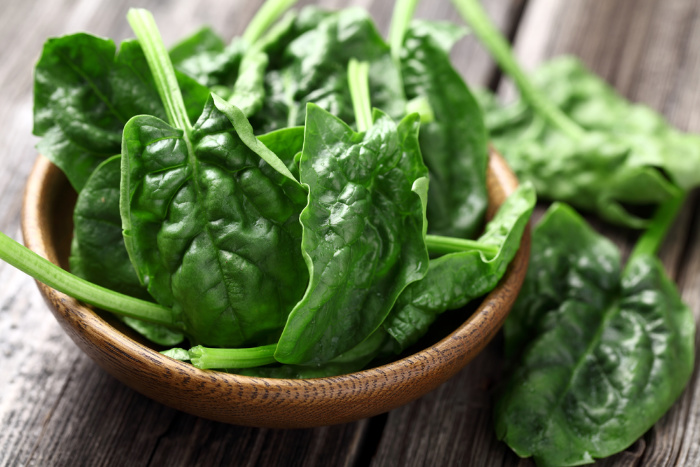
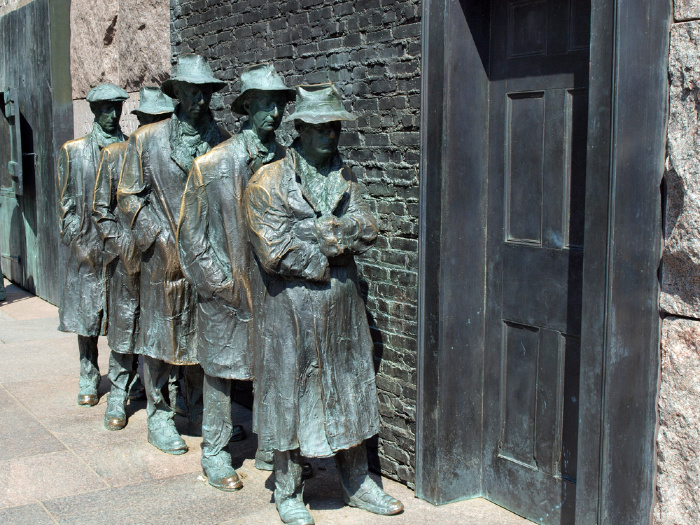

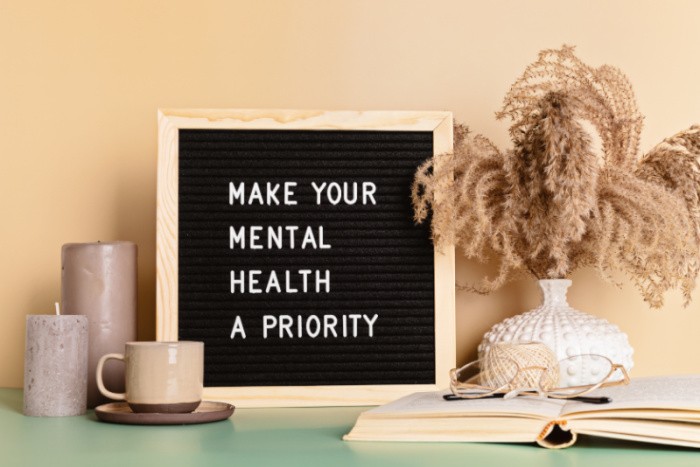
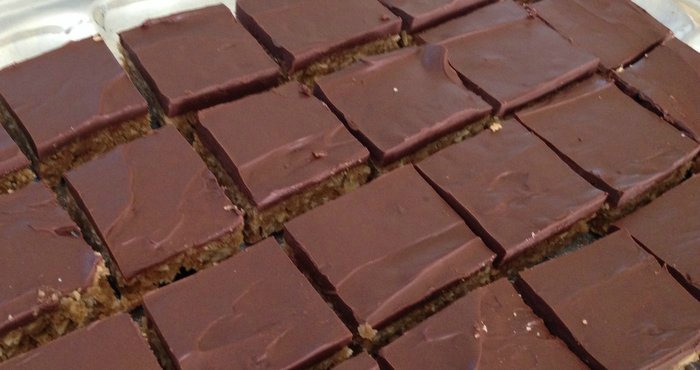













Great list. Along with checking the expiration/best by dates on food items, I always use a sharpie and mark the date I purchased the item on the can/box. Just helps me with rotation.
Hi Karl, I have so many black sharpies! Great comment! Linda
I would add coffee filters. I pick up a pack every time I go to the store. I try to keep a couple thousand on hand.
Hi Judy, good idea. I will add that right now. Linda
cc 100 items for survival – My Grandmother always said if you had woods for firewood, a garden and your farm animals, you would survive. Her monthly shopping list consisted of 5 items : coffee, tea, yeast, white flour and oatmeal. Occasionally baking powder. Her ‘extras’ were white sugar (we had honey bees), maybe chocolate. When she ran out of yeast, we had cornbread (grew and ground our own cornmeal). She canned, stored and dried her garden. We gathered nuts, picked berries. Had our own chickens and milk cows. Raised pigs (Remember having to corral the piglets in the backseat of their Ford Fairlane. She bought her feeds at the local feed store (although we didn’t really need to) but she basically did it for the printed feedsacks which became clothes and linens. Made a lot of her own herbal remedies and soaps – even candles. SO-_ that list would work for ‘city folk’ but “country folk would survive”. (I will admit that toilet paper would be on my list)
Hi Judy. I love your comment about your grandmother! That would be my dream, going back to those days. Love it, Linda
Linda, thank you for the list, Very helpful. I wrote it in my survival notebook and was glad I already had some of the things you suggest. I was glad to see water at the top of your list, as we cannot survive long without water. Love all I am learning from you.
My concern with food is we need nutritionally dense foods at all times and also in emergency situations. Thus, our bodies need to be adjusted to the texture and tastes NOW, not in the emergency moment. This is why I started years ago to feed my family more from basic foods. Tastes can be changed with time for absolute certain. My concern with refined foods is they usually do not fill us nor give enough nutrition for decent survival. For instance: if wanting to keep pancake mix on hand, make a whole wheat mix and keep it in the fridge since the whole wheat needs cool to last longer. Ramen ittself is refined, but maybe have some freeze-dried veggies such as peas and corn on hand to add to it? Train self and family to use water for thirst, not sweetened drinks or soda pop (maybe have those on occasion, not everyday). Over time, I chose a few vegetables and fruits, and meats/fish, to be kept on hand either canned or home-bottled. Pasta is also refined, so we make certain to have it with sides of vegetables and/or salad. If we have ONE refined food in a meal, no more is added for that meal, meaning: if we have spaghetti…pasta is refined food……, we have a veggie or two, and a salad, but no garlic bread, as that is a refined food. But if I make red lentil tomato soup, we can opt to have that with garlic bread. Always striving to make meals as nutritionally dense as possible, but taste is also important. My meal rule: taste/nutrition/fiber
Thus my list:
wheat
oatmeal
rice
unbleached flour
pasta
brown rice (keep in fridge as it has essential oils that can go rancid fast)
stoneground cornmeal (Bob’s Red Mill….keep in fridge as it has essential oils that can go rancid fast)
beans
lentils (high in protein)
dry milk
peanut butter
jams, homemade with Cornaby’s E Z Gel (we like to make them with low sugar)
honey / sugar / molasses
oil (usually: avocado oil), olive oil, butter
sea salt, pepper, spices, herbs, flavoring
vegetables/fruits: dried apple slices, dried carrots, dried onions, potato flakes are the basis, but we do store more than these of things we like
Meats/tuna fish
Eggs; also powdered whole eggs and powdered egg whites
yeast/baking powder/baking soda/ non-gmo cornstarch
We keep cans of spaghetti sauce, chili, and soup (mostly home-bottled soup) on hand for easy meals.
I make dry mixes of several recipes to help shorten dinner-prep time
Hi Janet, I’m so glad you shared your list. It reminds me I need to go get some lentils, cornmeal, and Cornaby’s E-Z Gel. I love this because we can compare and remind each other. I love it, Linda
Judy, I love your post!!!!! It reminds me of all I learned from my dear grandma. Thank you!!!!
I’d like to have my email to be added to your mailing list. Thank you!
HI Jim, I will add it right now, thank you! Linda
Oh, Linda,
You should have known I was going to pipe up about “#16 Chili – If you have beans, you can make your own, but canned chili is a great survival food if you can’t cook over a stove.” You know real Texas chili does not have beans in it. LOL!!!
Otherwise, great list that I will use in the next few days to help round out our stock.
Hi Harry, oh my gosh, that was the thing you mentioned the first time I met you on my blog!! Texans do not have beans in chili!! Every time I make chili now, I think about the “no beans”!! Love it! You always make me laugh! I love it! Linda
Great list, as usual, but I hope nobody listens to the febreeze idea! I got a free sample of that and sprayed it on something to test it…I had to throw it away!!! Could not get the smelll out and it made me sick for days!!! Stay safe and God bless!
Hi Jan. oh my gosh, that’s terrible about the Febreze! I have to have it for my husband’s golf gear. I only buy the “Clean Crisp” fragrance. I do not like the strong ones. Good to know about your experience, thanks for sharing! Linda
Linda, here are my comments – correlated with your list.
…..
alternates and additions,
…IF there are items on this list your family can not use, get your alternates- your family uses while they are available.In general we should not store things we do not use regularly. my exceptions are ramen, teriyaki bowls, and sugars. all of these can be used to make a fast meal.. Other items only one family member may eat- these would include dill pickles, dill relish,kraut, Mac and cheese at my house. They can be used to use for barter.
The hardest thing for me to determine has been to figure need in a time of lack of product.. ex: need of flour will increase dramatically from present should sandwich loaf no longer be available. Wild grains can often be used to stretch supplies and some experimentation has been done to determine recipe tweaks for MY family. Each family will need to research what they have in the wild- that may be added. sorrel, amaranth seed are two alternatives.
…to #14,Kool aid or Tang, I would add any flavored herbal or non herbal teas or mixes esp. ones that can be served hot.. Hot cocoa, spiced apple cider, In Teas- Mint blends, cinnamon and winter seasonings can be blended to make some nice combinations.
…To #15 Spaghetti sauce, I would add tomato paste, and tomato powder. There is a tomato bullion i have tried, it was not Tomato flavored enough for my most common use..and it contains msg which i am sensitive to.. tomato paste or powder could be added to small amounts of bullion powder- for a soup, stronger tomato flavor if it is tolerated by your family…
…to #22 Oils- Note Fats/ cooking oil specifically olive,avacado,sunflower, coconut oils/butter can be stored in the freezer to prolong shelf life./ any cool dark place can help maintain longer shelf life should the freezer go out. digging a hole and placing a 5 gallon bucket in it and putting on a lid will work for oils- to lower temps and be a mini root storage/oil storage.
….to 25..Oatmeal, I would add cream of wheat/farina. It is higher in protein and often is tolerated by those who have carb sensitivities.It is often about the things one adds to cereals. Many things can be added from this list of must haves- to add flavors.. peanut butter, butter, canned milk, dried fruit or jam- depending on the day and tolerances.
…to 26, Bandages or bandaids… add sterile wound care supplies., include Telfa and 4×4’s, applicators-(like q tips or cotton -make up remover pads) to apply antibiotic creams . Know how to use supplies without contamination of your bulk products.
….to 31 tums,or pepto bismol.. Know one can not give Pepto to Children! it contains saliciates, like aspirin.another alternative would be Milk of Magnesia.. yes it is used for constipation in large doses, in small doses it treats acid indigestion, and muscle cramps.Read the label!
…. to #32, cough drops… add hard candy such as spearmint, peppermint or butterscotch.Many times cough /dry throat is because of low level dehydration and drink of water and sm pc of hard candy works.
…. … to#37, antihistamines add:decongestants..for those sinus issues that become chest colds in the night..
to #52 shovels,.. several kinds pointed, square, sharp shooter, even a pair of post hole diggers! I would add hoe or another similar garden tool,, rake – lawn( with flimsy tines and garden rake with firm prongs,) and a hand cultivator if gardening for more than one in ground.,If primarily raised beds the three pronged cultivator, and garden trowel that are 6-8 inches long will work.
You will need extra handles for tools. examine each one carefully- with an eye to replacing. most straight handled tools can have handles replaced with a small limb/ trunk of a sapling. YOUR tools will need to be marked for easy identification. one way to do this is to paint the handles/metal on tools a certain color. They must be stored out of sun/moisture when not in use
. Don’t forget the files. to keep them sharp. a dull hoe used with force can still injure significantly.
…to 54 Garden amendments, I would add Garden protection, soil covers and crop covers to protect from bugs- row covers, and to protect from high UV exposure…in southern areas of our country 30% shade cloth has been utilized this year /and effective.
…to #83 bleach .. I would add non chlorine bleach for clothing, and for dry peroxide uses.. some bacteria are resistant to bleach, but not peroxide. I would also add MOLD treatment for small areas or early treatment for prevention after flooding or neglected – newly discovered old spill areas. Bleach only kills surface, MOLD treatment can be researched on u tube. contractors use it.
Oh never enough paper towels or TP many will be out. family cloths and old cleaning cloths can be used instead, BUT these stretch my other resources.
Hi Denise, great ideas to share with all of us, thank you! Linda
As always a good list to have. I will add many of them to my list and keep adding as you keep sending. I have heard of a Ghost Town for sale and when I get a chance to check on it I am doing so. In the mountains of nowhere and if I can get it for a deal I will. No one knows where it is.
Hi Jackie, that sounds awesome! Love it! Linda
Jackie, the first things i would check are: why did it become a ghost town?, rainfall amounts for the year and rain patterns, + cistern /well capabilities. Just sayin’ That remote has many pro’s and cons. Good hunting and prospecting.
Denise:
It became a ghost town because it is in the mountains and people moved because their were no real jobs to be had in the towns. Not because of any problem with the towns. It’s a nice quiet place and my daughter is well trained in police procedure as a secretary and can get a job in any of the police departments that are there and my son and his wife are disabled so they can help with the planting of crops that we do and my daughter in love knows how to can and save foods which will be a great help to my husband and myself who are both disabled Veterans.
This is my second attempt to comment. Last time my computer shut down on me.
Your list is a good list for anyone living anywhere in any kind of home with any level of experience. I figure you wanted it to be simple thus sticking to off the shelf products. I figure that is what you were thinking of. Easy, quick, simple and a plan anyone can follow and implement.
I would add canned pudding to your list because it’s available and a nice treat along with fruit cups. And it’s worth noting that you can buy Parmalat which is shelf stable milk and also beef or chicken broth in the soft boxes and some canned meat is sold in retort pouches which are handy for backpacks and pockets. Add Ramen noodles and some dehydrated foods and you can reduce the weight of a backpack or container of emergency foods ready to grab and go in case one has to evacuate or “bug out”.
I read a lot of good ideas by other subscribers, but making “survival foods” like pemmican and hardtack, stocking dehydrated foods and wheat berries, building up a water storage system, learning how to forage edible plants or build a battery bank are skills, projects and recipes for next level preppers that want to get deeper into prepping, survival and homesteading.
HI Frank, great comment. I have never made pemmican but I updated my hardtack post. It should go live again with updated ideas soon. Having extras of anything is going to be critical for sure. It’s all good, Linda
Thanks you Linda for lists like this. It is because of you that we are 100% better prepared for whatever this winter will bring. Stay safe and healthy everyone.
Hi Chris, thank you for your kind words, you are always so nice! Thank you, my friend! Linda